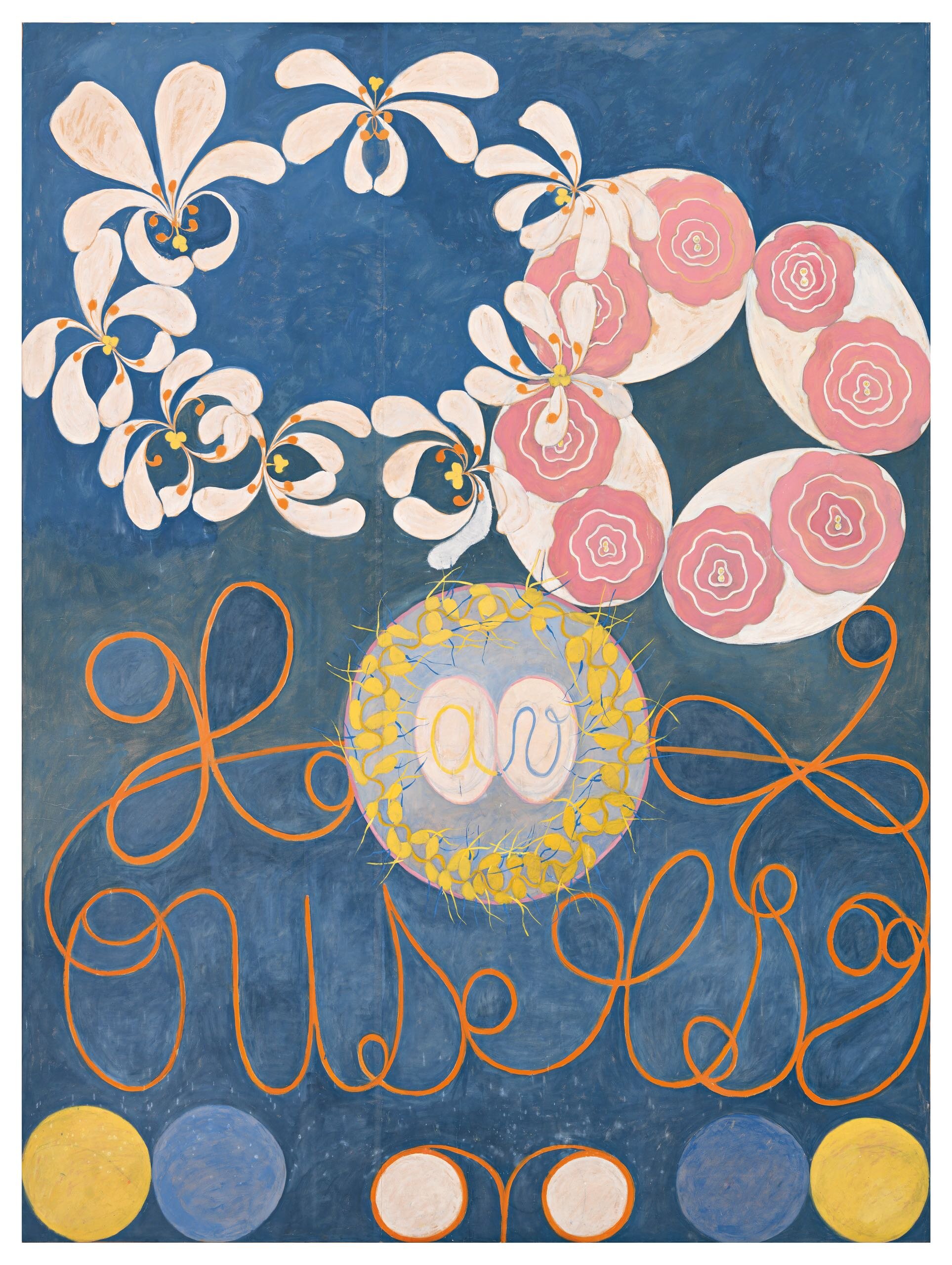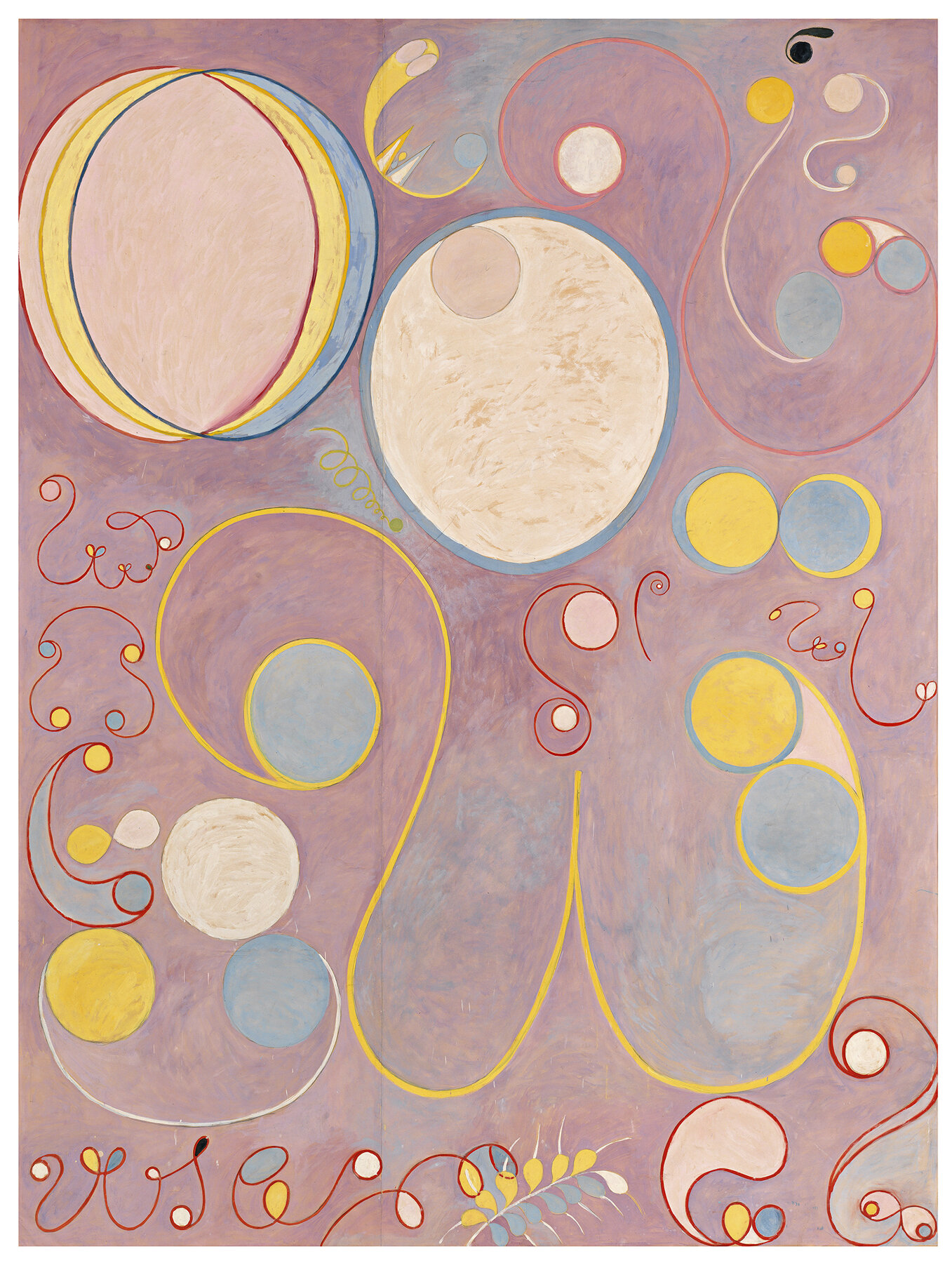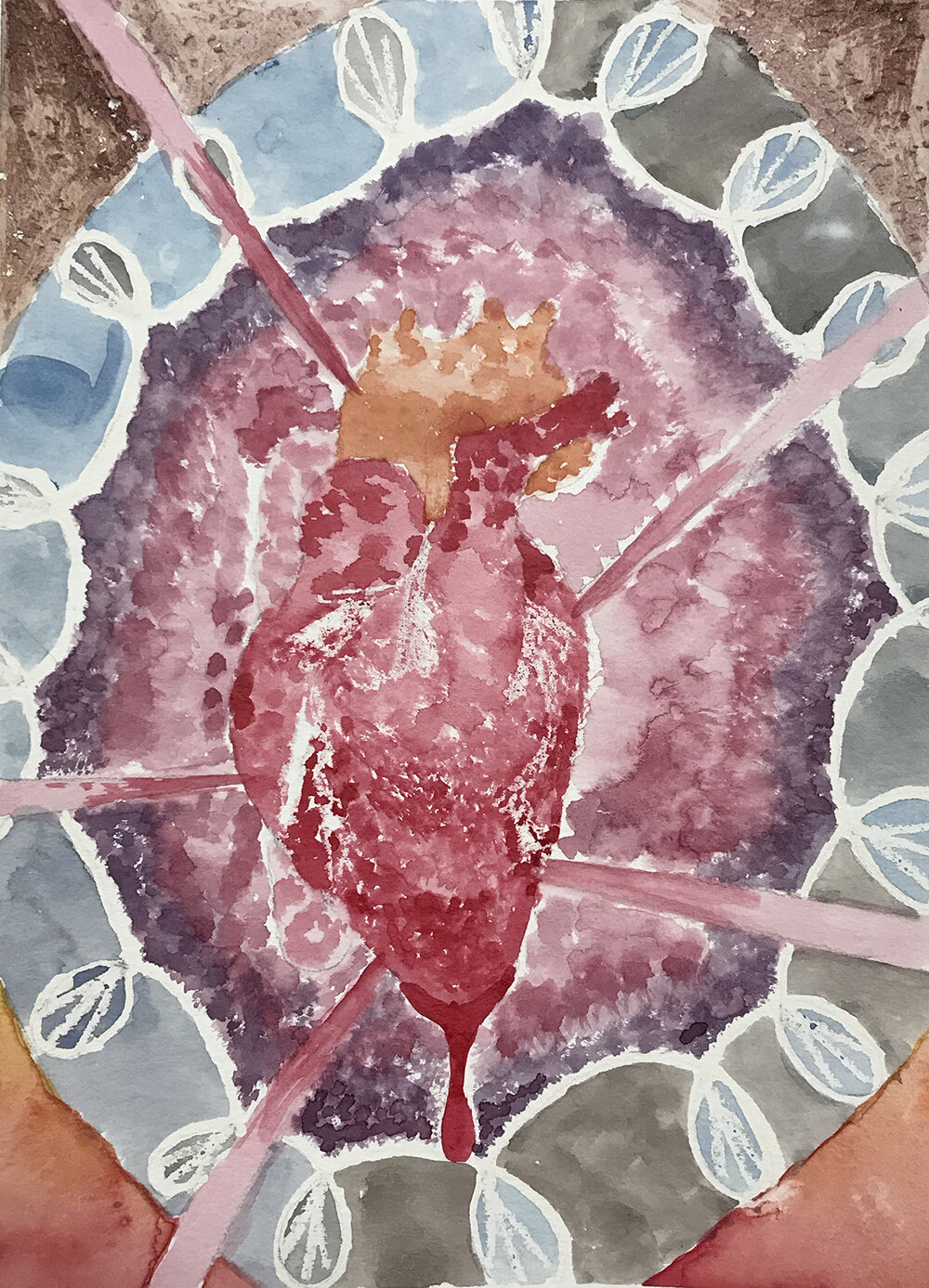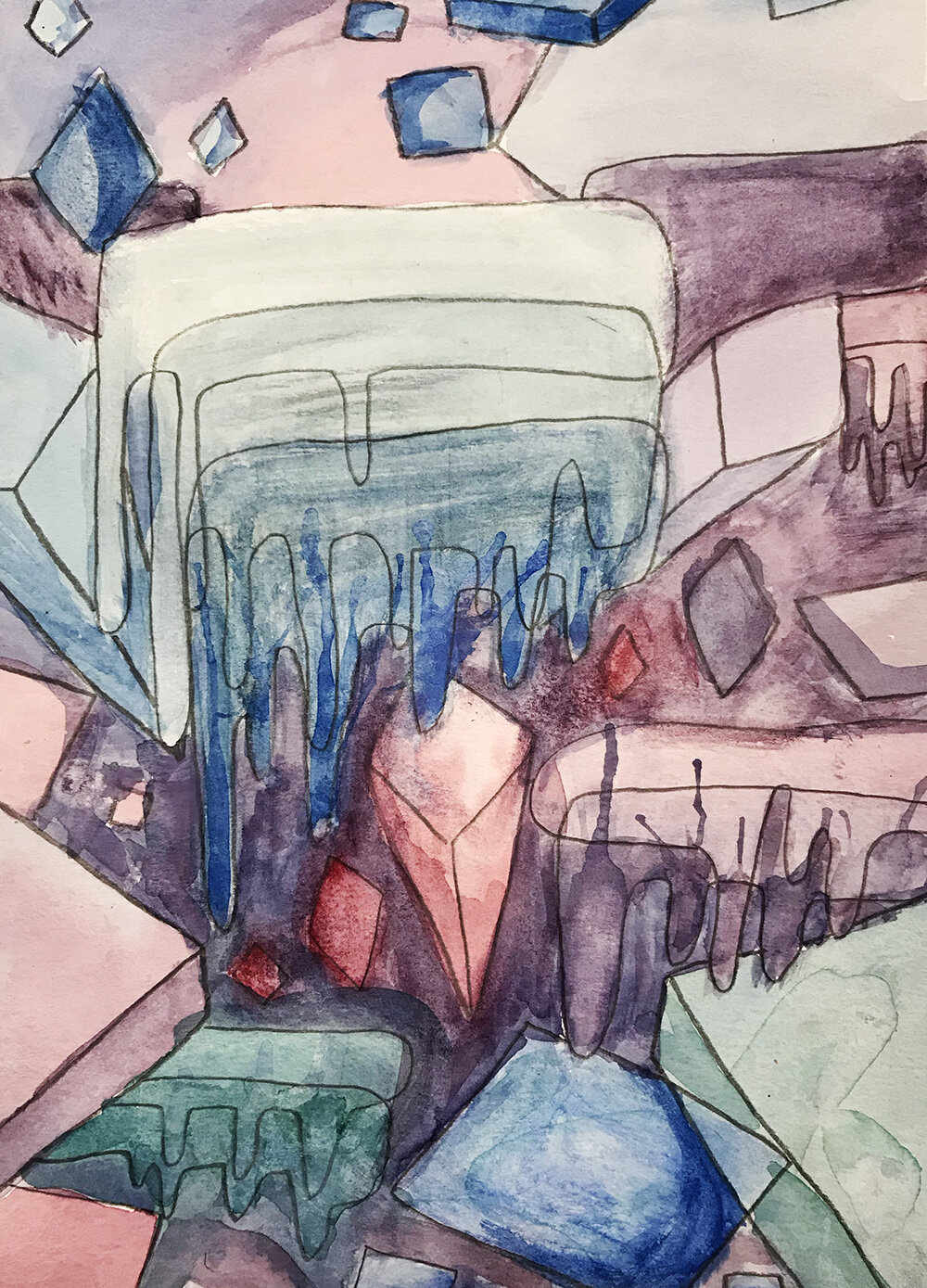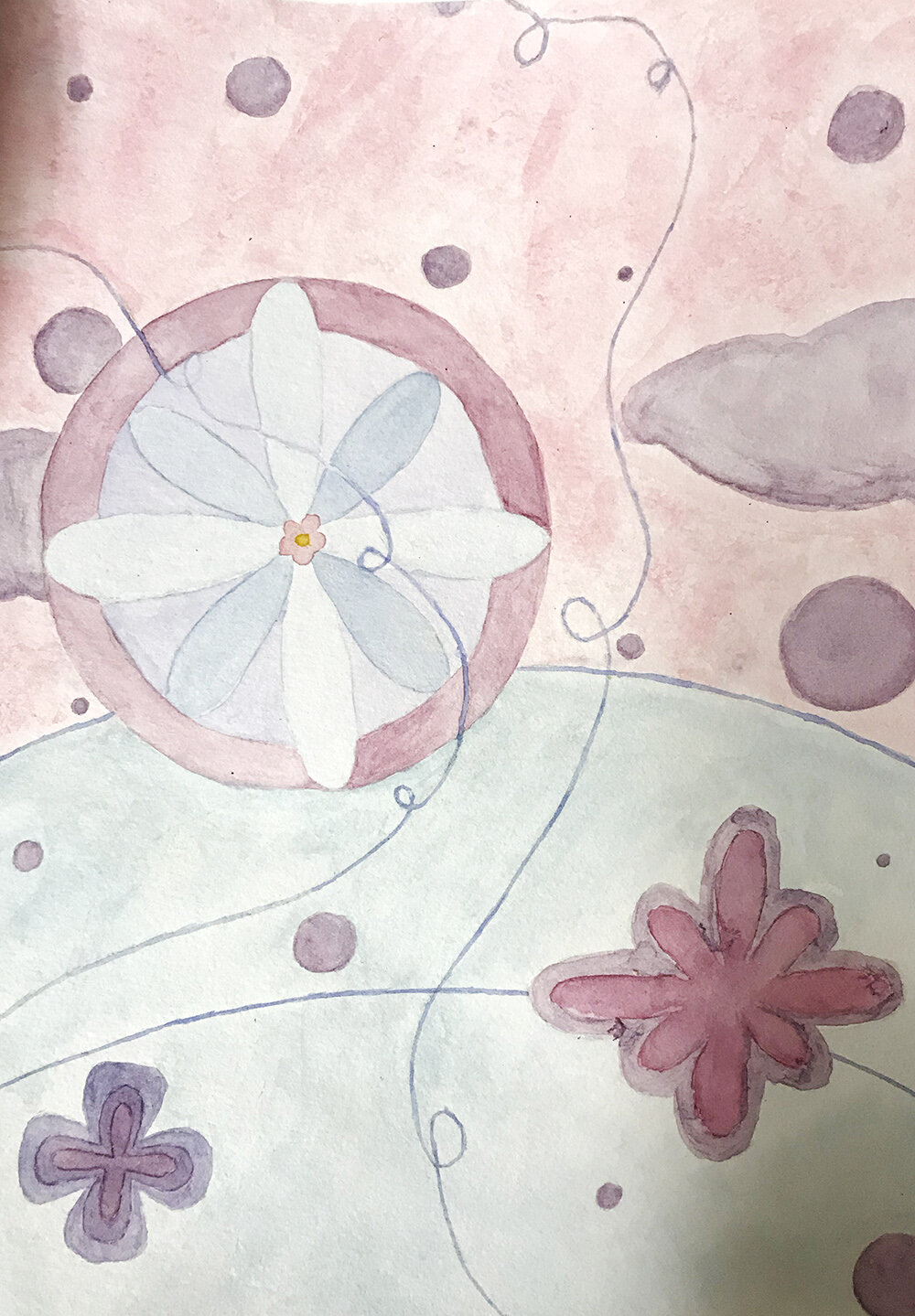Art from Within - Creative Expression, Artmaking
Lesson Description:
Students will have three class periods to create their watercolor paintings. Students will come to class with their completed thumbnail sketches for potential designs. We will go over what makes a successful composition in abstract art as well as the main elements of Hilma af Klint’s work. Students will break into pairs and discuss their thumbnail sketches, talking about which one is the strongest or how it could be developed further. Students will then have the remaining class periods to work independently on their watercolor paintings.
Grade Level:
High School - Beginning
High School - Advanced
Time Frame:
3 - 70 minute class periods
Focus Artwork:
Student Artwork:
Lesson Objectives/Student Learning Outcomes:
Students will be able to:
Create an abstract composition incorporating the style of Hilma af Klint, using watercolor.
Utilize the principles of design balance and focal point to create a harmonious composition.
Demonstrate their understanding of color theory and using a triadic color scheme.
Literacy Focus:
Listening - Students will practice listening as they receive instructions for the components of the lesson. They will also practice listening in their partner groups as they discuss their thumbnail sketches.
Speaking - Students will practice speaking as they discuss their thumbnail sketches with a partner, focusing on relevant art vocabulary.
Reading - Students will practice reading as they read through the assignment checklist and rubric.
Writing - Students will practice writing by writing notes about their thumbnail sketches to share with their partner.
Art Materials:
Sketchbook
Pencil
Ruler
Colored pencils
Watercolor paints
Watercolor paper
Masking tape
Instructional Resources:
Chromebook
LCD Projector
HP Sprout or Docucam
Procedures:
Day Before:
Homework:
Students will create four thumbnail sketches of potential designs for their final piece in their sketchbooks.
Students will write 2-3 sentences describing their design and how they used the principles of design, balance and focal point, in their design.
Day 1:
Anticipatory Set:
Teacher will pass out assignment checklist and rubric.
Direct Instruction:
Class will go over the assignment checklist and rubric together. Highlighting key words and important information.
Teacher will split students into partners and explain expectations, etiquette, and goals for discussing thumbnail sketches with their partners.
Independent Practice:
Students will take 15 minutes to discuss thumbnail sketches and choose which design is strongest for their composition. Teacher will circle the room to check in with groups.
Direct Instruction:
Teacher will ask a few partner groups to share their discussion.
Teacher will go over supplies, tools, and etiquette for using.
Teacher will pass out watercolor paper and demonstrate how to transfer design to the paper.
Independent Practice:
Students will begin working independently on their final pieces.
Closure:
Clean up, reiterate due date.
Day 2:
Direct instruction:
Teacher will pass out materials and reiterate expectations.
Independent practice:
Students work independently on final piece.
Closure:
Clean up, reiterate due date.
Day 3:
Direct instruction:
Teacher will pass out materials and reiterate expectations.
Today is the last day to work on watercolor designs.
Independent practice:
Students work independently on final piece.
Students will complete a self-evaluation using the rubric before they turn in.
Closure:
Clean up, let final pieces dry before turning in.
Modifications for Learners’ Specific Needs:
Students may choose to use a simplified rubric (3-2-1-0) instead of (4-3-2-1-0).
Students may use all pan colors instead of mixing their own.
Students may have extended time to complete their final piece. Up to 10 school days after due date.
Reteaching in small groups when necessary.
ELL Students:
Use of translated vocabulary sheets.
Lots of visual supports and scaffolds.
Multiple Intelligences Used:
Visual-Spatial
Drawing, painting, and executing their final design.
Linguistic-Verbal
Using new vocabulary words introduced in the lesson.
Kinesthetic
Using fine motor skills to control watercolors.
Interpersonal
Working in pairs as they discuss their designs.
Students will interact organically as they work independently.
Vocabulary:
Abstract art - art that does not attempt to represent external reality, but seeks to achieve its effect using shapes, forms, colors, and textures.
Balance - the use of artistic elements such as line, texture, color, and form in the creation of artworks in a way that renders visual stability.
Charging - technique that involves mixing two or more colors directly on the paper instead of premixing on a palette
Color scheme - the choice of colors used in various artistic and design contexts
Triadic color scheme - A color scheme that involves three colors that are equidistant from each other on the color wheel e.g., red-yellow-blue
Composition - composition is the placement or arrangement of the visual elements, such as figures, trees, and so on in a work of art, as distinct from the subject or the style with which it is depicted.
Flat Wash - brushing successive strokes of color on a wet or dry surface, with each stroke placed next to the other, to create an even layer of color
Focal Point - the area in the composition to which the viewer's eye is naturally drawn. It is essential to classic art, although abstract artists may deliberately create compositions without focal points. Focal points may be of any shape, size or color.
Intensity - a color’s saturation, brightness or strength
Subconscious - of or concerning the part of the mind of which one is not fully aware but which influences one's actions and feelings.
Variety - refers to the use of different qualities or instances of the visual elements. It is the opposite of repetitive or monotonous use of the elements, adds interest to the work of art.
Criteria for Assessment of Student Learning:
Did students….
Create an abstract composition incorporating the style of Hilma af Klint, using watercolor?
Utilize the principles of design balance and focal point to create a harmonious composition?
Demonstrate their understanding of color theory and using a triadic color scheme?
Method of Assessment:
Formative
During anticipatory set, check for understanding by using thumbs up/thumbs down questions.
During guided practice, teacher will stop at key intervals to assess that all students are on the right track.
During independent practice, teacher will walk around the room checking in on group discussions and asking further questions.
During independent work time, teacher will check in with students to ensure they are on track and meeting all rubric standards.
Summative
Students will turn in their final art piece along with a self-evaluation.
National Core Arts Standards Addressed:
HS Proficient VA:Cr1.1.Ia Use multiple approaches to begin creative endeavors.
For a PDF version of this lesson, click here.

